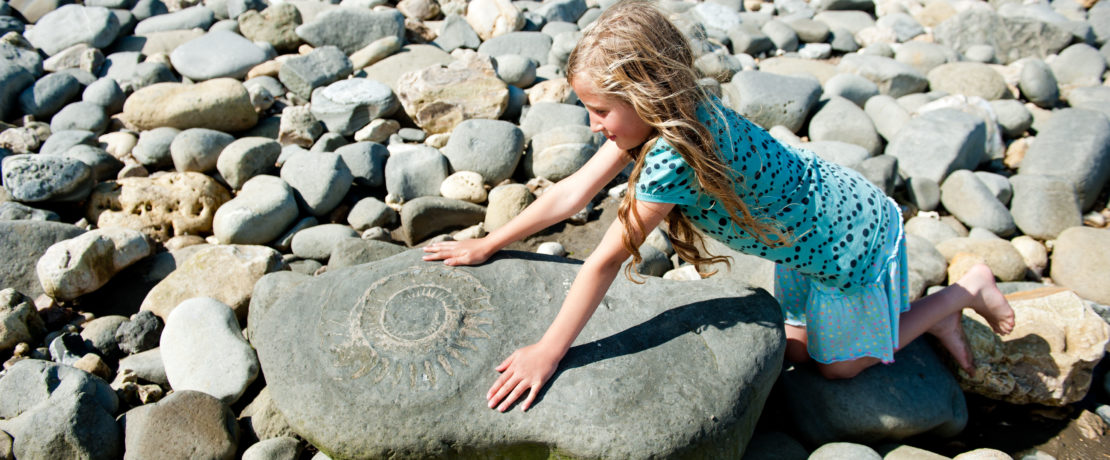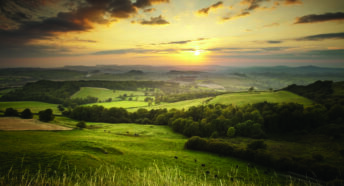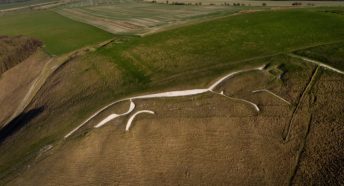Beaches uncovered: our ancient coastlines
Earth scientist Dr Anjana Khatwa takes us back in time to discover the ancient history of some of England’s most amazing beaches
Lyme Regis, Dorset
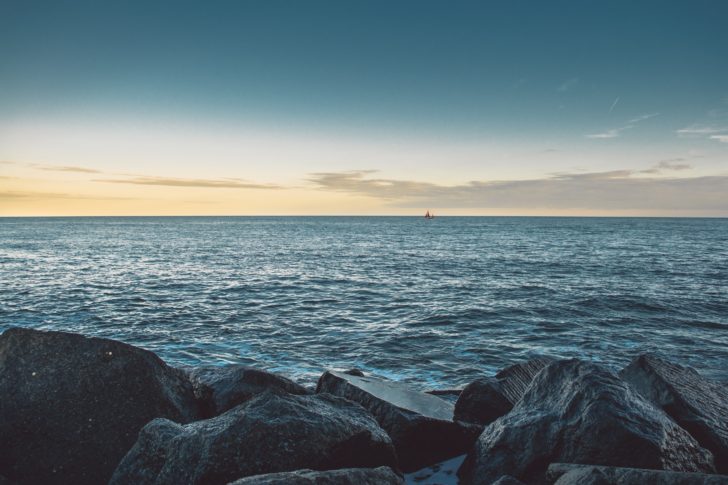
A statue of Mary Anning, the celebrated Victorian palaeontologist, now stands frozen in motion as she strides towards the beaches of Lyme Regis on the Jurassic Coast. Now a major attraction in this lovely small coastal town in Dorset, she represents a fascination that people have had for centuries with this coastline. You, too, can walk in their footsteps, combing the beaches in search of fossils; rocky remains of extinct life dating back to almost 200 million years ago. The beaches, which are only safely accessible at low tide, are packed full of Jurassic treasures that include belemnites, fool’s gold ammonites and perhaps (if it is your lucky day!) even an ichthyosaur vertebra.
Coverack Beach, Cornwall
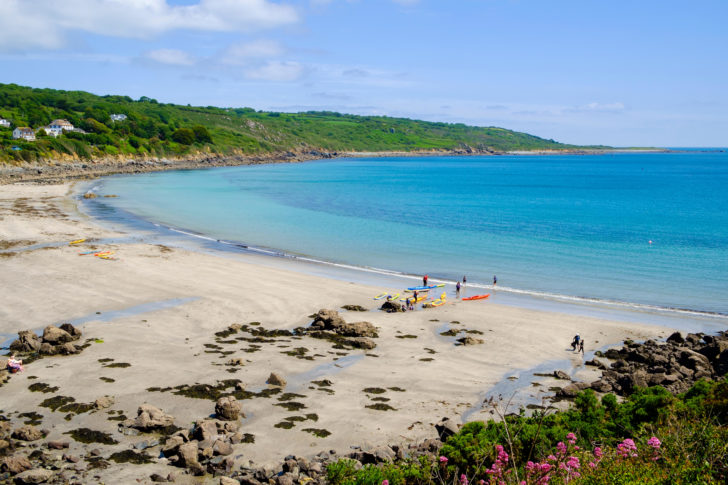
This is no ordinary beach. It’s one of the few places in the world where you can literally take a journey into the centre of the Earth. The rocks that are stretched out along Coverack Beach were forced up to the Earth’s surface almost 300 million years ago during a period of intense tectonic activity. I get goosebumps when I walk from north to south on this beach. Each footstep takes you deeper into what was once the Earth’s centre. The rocks you walk across represent the oceanic crust, the mantle beneath, and the boundary where they meet (known as the ‘Moho’). It’s quite something to ponder as you enjoy your delicious Cornish ice cream.
St Bees Beach, Cumbria
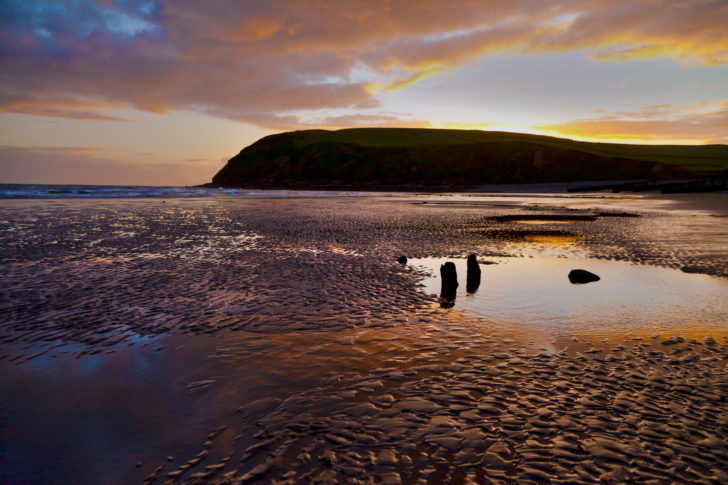
A mile-long sand and shingle beach stretches along the seafront at the quiet town of St Bees. The northern end is marked by the red sandstone cliffs of St Bees Head. Formed in ancient deserts around 250 million years ago, they are home to one of England’s largest seabird colonies. At the southern end, the rocks tell a different story, of how an ice sheet advanced from Scotland across northern England some 19,000 years ago, leaving deposits known as glacial moraines. The soft cliffs gently tumble down onto the beach, creating an expanse of pebbles and sand to amble along at low tide.
West Runton Beach, Norfolk
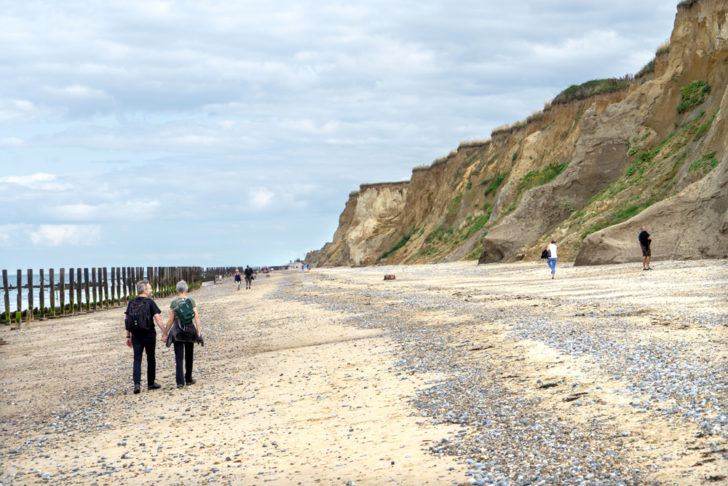
The flat, expansive sands at low tide on West Runton Beach are utterly idyllic to stroll along on a hot, sunny day. You have to time-travel in your mind to imagine that only 750,000 years ago, herds of large mammoths were grazing on the grasslands of this ice age landscape. In 1990, one of the oldest and best-preserved examples of a fossilised mammoth skeleton, known as the West Runton elephant, was found in these cliffs. Today, the beach is a joyous outdoor playground with plenty of soft sand, rockpools and fossils to look out for. You can have fun filling your pockets with the Cretaceous sea urchins that fall out of the chalk while you search for that elusive mammoth bone.
Runswick Bay, North Yorkshire
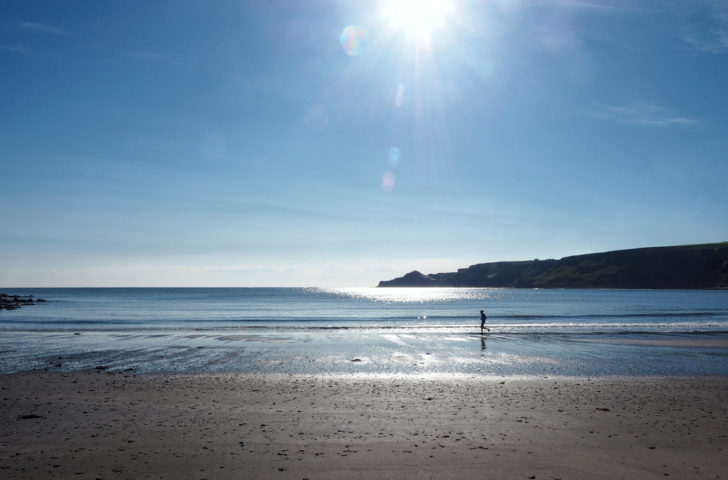
Nestled on Yorkshire’s beautiful coast, just 10 miles north of Whitby, is the pretty little village of Runswick. Although Runswick Bay is quieter than some of the other beaches around Whitby, it offers an adventurous day out that will take you back to the Jurassic Period. The rocks here formed about 200 million years ago in an underwater wonderland populated with amazing sea creatures, like ichthyosaurs, that no longer exist. A hard tap with a geological hammer on an egg-shaped ball of grey limestone may even yield a perfect ammonite. At low tide, the broad, sandy beach is a perfect destination for bodyboarding, making sandcastles or a gentle stroll.
Stay safe
Exploring these historic beaches is a real adventure, and finding fossils is the icing on the cake! But do take care – stick to the beaches and away from the cliffs, and be aware of loose or falling rocks when exploring.
About the author
Dr Anjana Khatwa is an award-winning Earth scientist, TV presenter and writer. She lives in Dorset, close to the Jurassic Coast, in a house filled with rocks and fossils.
